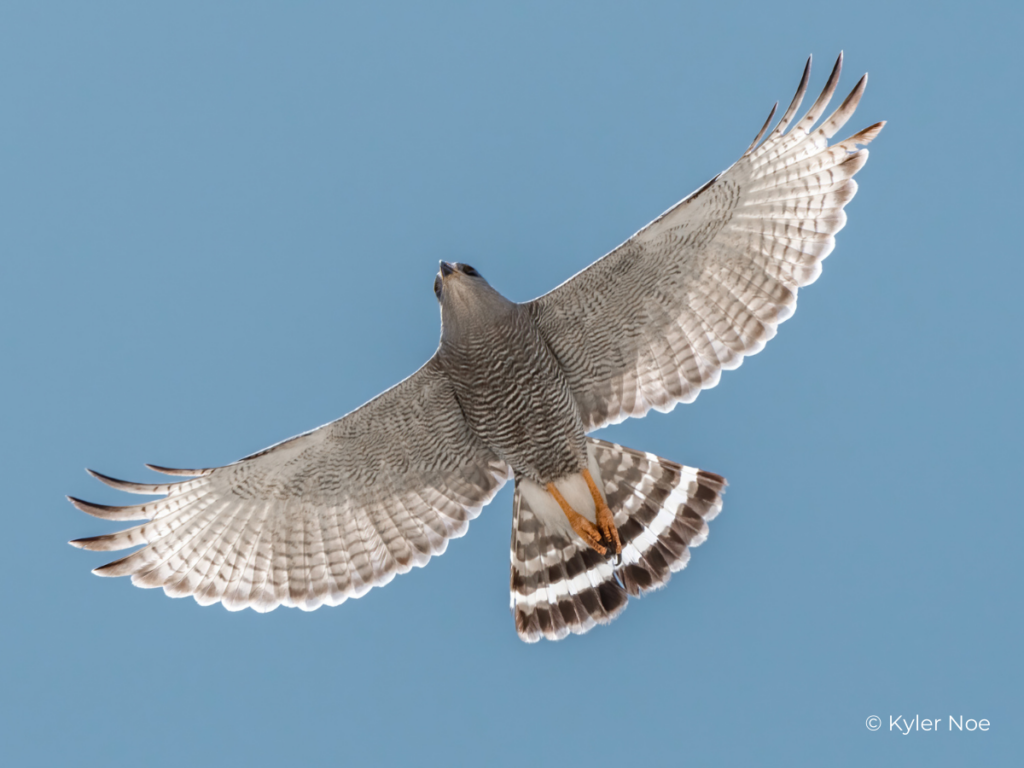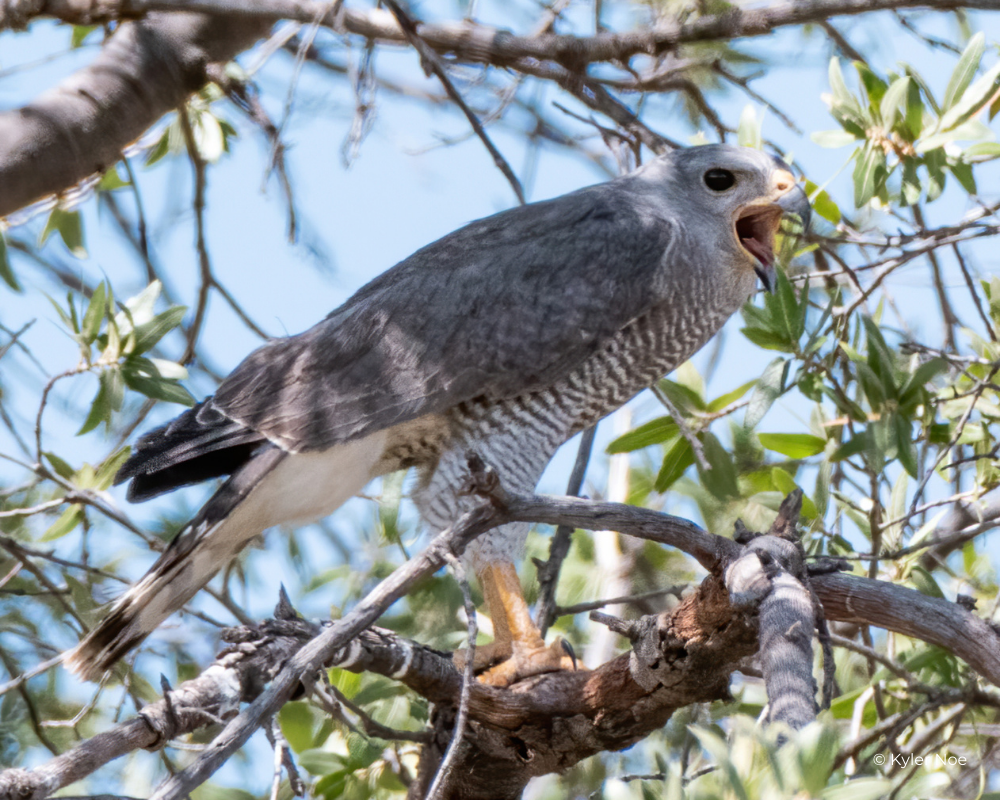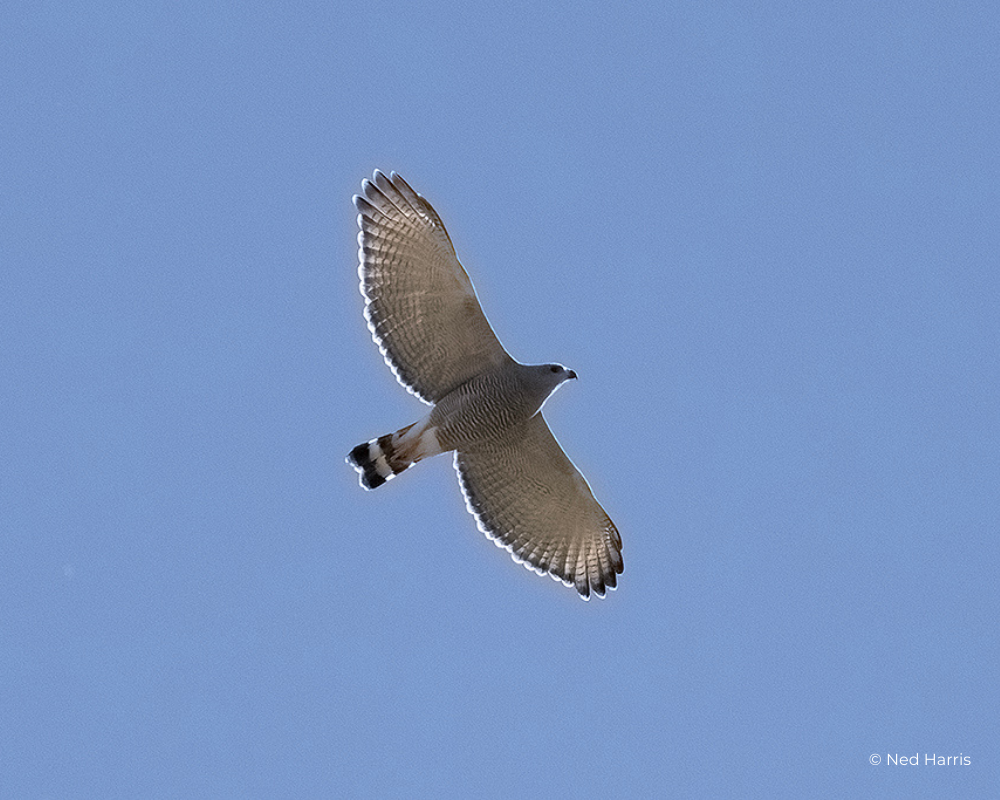Overview
Gray Hawk is a medium-sized denizen of the Southwest, restricted in the US to riparian areas and dry creek beds of the southern parts of Arizona, New Mexico (rare), Texas (Big Bend and Lower Rio Grande Valley), but occurs south to southern Central America. Gray Hawks are uncommon but sometimes easy to find since they tend to sit on exposed perches and calls more frequently than most raptors, especially in the morning. Its call, a mournful whistle that rises and falls, pooEEeer, is somewhat un-hawk-like but most resembles the call of a Red-shouldered Hawk. It sometimes gives a scream similar to a Red-tailed Hawk but not as raspy. Gray Hawks soar mostly during the early morning hours, then quietly spend the rest of the day perch hunting lizards, small mammals, and birds in shaded cottonwood-lined creek beds. Gray Hawks use cottonwoods for nesting but wander into nearby mesquite woodlands and sem-open brushy areas at times in search of food.
The Gray Hawk is aptly named for its remarkable, finely barred, grayish adult plumage and is not often confused with any other North American raptor. However, 1st year birds are more variable and are more frequently confused with juvenile Broad-winged Hawks. Distinguishing traits for 1st-year Gray Hawks are the distinctive head pattern, rounder wing tips, longer tails with narrow bands at the base, and finely banded remiges.




